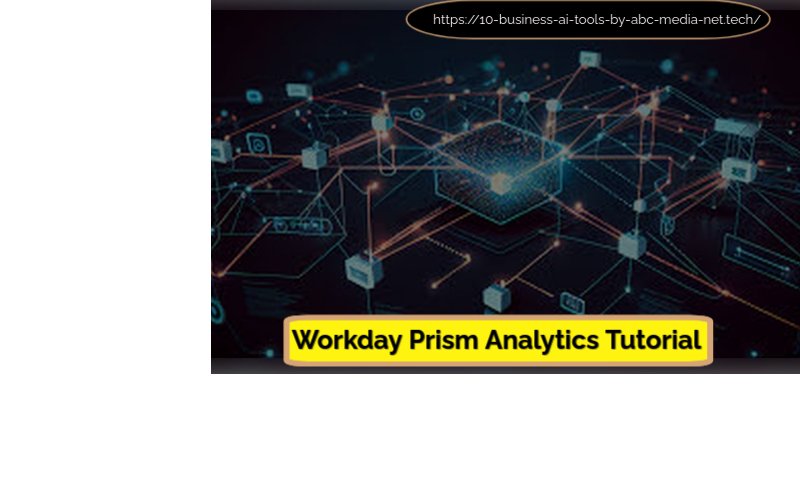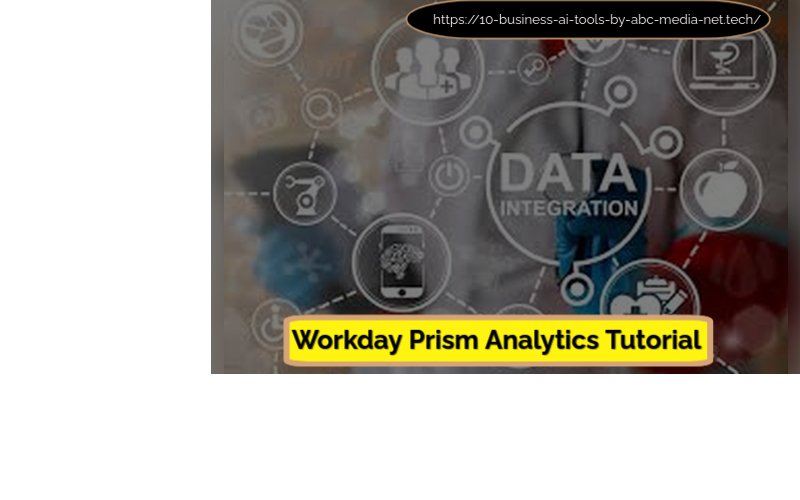Table of Contents
- Introduction
- What is Workday Prism Analytics?
- Key Features of Workday Prism Analytics
- Getting Started with Workday Prism Analytics
- Data Preparation in Workday Prism Analytics
- Building Reports and Dashboards
- Advanced Analytics Techniques
- Best Practices for Using Workday Prism Analytics tutorial
- FAQs
- Conclusion
Introduction
In today’s data-driven world, organizations need to leverage their data effectively to make informed decisions. The Workday Prism Analytics tutorial provides a comprehensive guide to understanding and utilizing this powerful analytics tool, enabling businesses to integrate, analyze, and visualize data from various sources seamlessly.
Here is the bar graph depicting the lengths of different sections in the Workday Prism Analytics Tutorial. Each section is represented on the x-axis, while the y-axis shows the length of the tutorial in minutes.
What is Workday Prism Analytics tutorial?
Workday Prism Analytics is a robust analytics platform that allows organizations to combine data from multiple sources, including internal Workday applications and external systems, into a unified analytics environment. This capability enables users to derive actionable insights that drive business growth and enhance operational efficiency.
Key Features of Workday Prism Analytics tutorial
- Unified Data Environment: Integrates data from various sources for a comprehensive view.
- Self-Service Analytics: Empowers users to perform analyses without needing extensive technical expertise.
- Robust Data Preparation: Provides tools for cleaning, transforming, and enriching data.
- Interactive Reporting: Offers drag-and-drop functionality for creating reports and dashboards.
- Advanced Analytical Techniques: Supports predictive modeling and machine learning for deeper insights.
- Security Framework: Ensures data privacy and compliance with customizable security settings.
Getting Started with Workday Prism Analytics tutorial
Accessing Workday Prism Analytics
To begin your journey with the Workday Prism Analytics tutorial, you must first gain access to the application within your Workday environment. This typically requires permissions granted by your system administrator.
Data Integration

Data integration is the first step in utilizing Workday Prism Analytics effectively:
- Connect to internal Workday applications such as Human Capital Management (HCM) and Financial Management.
- Integrate external systems like Salesforce or Google Analytics through APIs or file uploads.
Cleaning and Transforming Data
Once your data sources are integrated, it’s crucial to prepare your data for analysis:
- Perform data cleansing to eliminate inaccuracies.
- Transform raw data into a structured format suitable for analysis.
Creating Data Pipelines
The tutorial covers how to create data pipelines that blend and transform data using various functions available in Workday Prism Analytics, allowing you to prepare datasets efficiently.
Building Reports and Dashboards
Creating Interactive Reports
With your data prepared, you can start building reports:
- Use the intuitive interface to create interactive reports that visualize key metrics.
- Customize reports with different chart types, filters, and formatting options.
Customizing Dashboards
Dashboards provide a visual representation of your data insights:
- Utilize drag-and-drop functionality to design dashboards that highlight important information.
- Share dashboards across your organization for collaborative decision-making.
Advanced Analytics Techniques
Predictive Modeling
Workday Prism Analytics supports advanced analytics techniques like predictive modeling:
- Leverage historical data to forecast future trends.
- Use these insights for strategic planning and resource allocation.
Machine Learning Applications
Integrate machine learning algorithms into your analyses:
- Identify hidden patterns and correlations within your datasets.
- Enhance decision-making processes based on predictive insights.
Best Practices for Using Workday Prism Analytics tutorial
To maximize the benefits of the Workday Prism Analytics tutorial, consider the following best practices:
- Define clear objectives for your analytics initiatives.
- Regularly review and update your datasets for accuracy.
- Collaborate with team members to share insights and findings.
Workday Prism Analytics excels in its ability to integrate diverse data sources seamlessly. This feature allows organizations to:
- Combine Internal and External Data: Users can pull data from various Workday applications (like HCM and Financial Management) and integrate it with external data sources such as CRM systems, ERP systems, or third-party databases.
- Real-Time Data Access: With real-time data integration capabilities, users can make decisions based on the most current information available, enhancing responsiveness to changing business conditions.
1. Self-Service Analytics
Empowering users with self-service analytics is a cornerstone of Workday Prism:
- No Coding Required: Users can create reports and perform analyses without needing advanced technical skills or coding knowledge, democratizing access to data insights.
- Interactive Exploration: The platform enables users to explore data interactively, allowing them to drill down into specifics, filter results, and visualize data in various formats (charts, graphs, tables).
2. Data Preparation of Workday Prism Analytics tutorial

Effective data preparation is crucial for accurate analysis:
- Data Cleansing Tools: Users can identify and rectify inaccuracies in their datasets through built-in cleansing tools that highlight duplicates, missing values, and inconsistencies.
- Transformations and Enrichments: The platform supports complex transformations such as aggregations, calculations, and the creation of new derived metrics. This ensures that the data is not only clean but also enriched for deeper insights.
3. Interactive Reporting and Dashboards
Creating dynamic reports and dashboards is straightforward with Workday Prism:
- Customizable Visualizations: Users can choose from a variety of visualization options (bar charts, line graphs, pie charts) to best represent their data. Customization options allow for branding and tailored layouts.
- Real-Time Dashboards: Dashboards can be set up to reflect real-time changes in data, providing stakeholders with up-to-date insights at a glance.
4. Advanced Analytics Capabilities
Workday Prism goes beyond basic analytics with advanced features:
- Predictive Analytics: Users can employ predictive modeling techniques to forecast future trends based on historical data. This capability is particularly useful for workforce planning and financial forecasting.
- Machine Learning Integration: The platform allows users to apply machine learning algorithms to identify patterns and correlations within large datasets, leading to actionable insights that inform strategic decisions.
5. Data Security and Governance
- Role-Based Access Control: Workday Prism employs robust role-based permissions that ensure users only have access to the data they are authorized to view. This helps maintain compliance with data privacy regulations.
- Audit Trails: The platform maintains detailed logs of who accessed what data and when, providing transparency and accountability in data usage.
6. High-Performance Analytics Engine
The performance of Workday Prism is optimized for speed:
- In-Memory Processing: By using an in-memory analytics engine, the platform enables rapid querying of large datasets, significantly reducing the time it takes to generate reports or insights.
- Scalability: As organizations grow and their data needs expand, Workday Prism can scale accordingly without compromising performance.
7. Collaboration Features
Facilitating teamwork is essential for leveraging analytics effectively:
- Sharing Insights Easily: Users can share dashboards and reports with colleagues directly within the platform or export them in various formats (PDF, Excel) for presentations or meetings.
- Commenting and Annotations: Team members can leave comments on specific reports or dashboards, fostering discussions around the insights presented.
8. Automated Data Updates
Keeping data current is vital for accurate analysis:
- Scheduled Refreshes: Users can set up automated refresh schedules for their datasets, ensuring that analyses are based on the latest available information without manual intervention.
- Alerts for Data Changes: The system can notify users of significant changes in key metrics or datasets, enabling proactive decision-making.
9. User-Friendly Interface
The intuitive design of Workday Prism enhances user experience:
- Drag-and-Drop Functionality: Users can easily create reports and dashboards by dragging elements into place, making it accessible even for those with minimal technical skills.
- Guided Workflows: Step-by-step guides help users navigate through complex tasks like creating reports or setting up integrations.
FAQs
What is the primary purpose of Workday Prism Analytics tutorial?
Workday Prism Analytics enables organizations to integrate, analyze, and visualize data from various sources, providing actionable insights for better decision-making.
How do I access Workday Prism Analytics tutorial?
Access requires permissions granted by your system administrator within your organization’s Workday environment.
Can I integrate external data sources?
Yes, Workday Prism Analytics supports integration with various external systems through APIs or file uploads.
What types of reports can I create?
You can create interactive reports using various visualization tools available in Workday Prism Analytics.
Does it support advanced analytics techniques?
Yes, the platform supports predictive modeling and machine learning applications for deeper insights.
Conclusion
The Workday Prism Analytics tutorial serves as an essential resource for organizations looking to harness the power of their data effectively. By following this guide, users can unlock valuable insights that drive informed decision-making and foster a culture of data-driven strategies within their organizations. Start exploring the capabilities of Workday Prism Analytics today and transform how you leverage your business intelligence!






